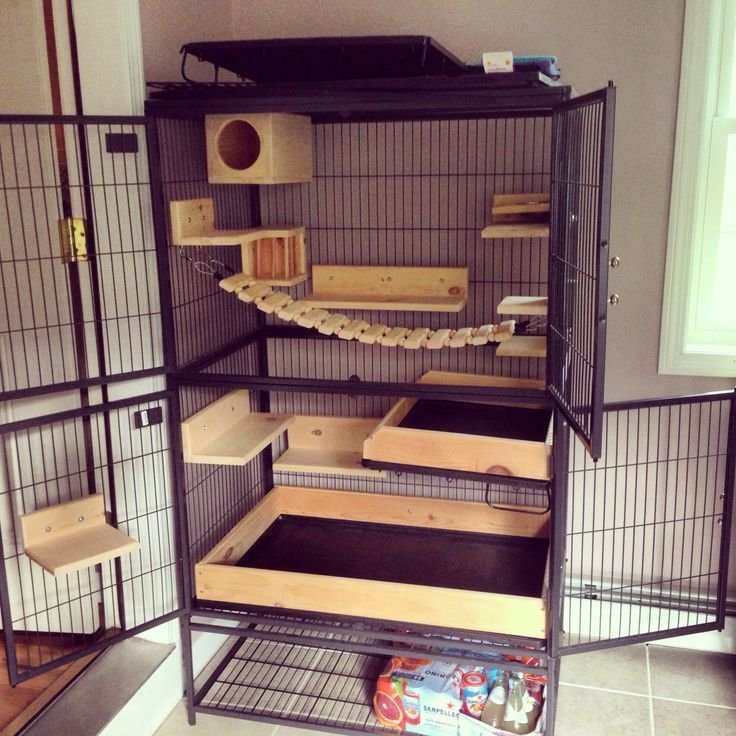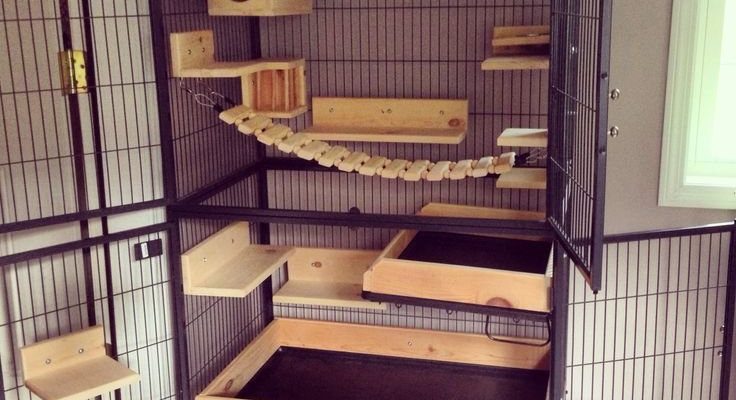
Caring for a black velvet chinchilla isn’t just about providing food and water. It’s about creating a cozy home where they can thrive. Just like how we need our comfy spots to relax, chinchillas need a well-setup environment, a balanced diet, and a proper grooming routine. Don’t worry—this guide will break it all down for you in a way that’s easy to understand.
Understanding the Black Velvet Chinchilla
Black velvet chinchillas are a unique breed known for their stunning, deep black fur. Picture a luxurious piece of velvet draped over a small ball of energy—dazzling, right? These chinchillas, like other chinchilla breeds, are originally from the Andes Mountains in South America. They’ve adapted beautifully to various environments, which is why they can make such great pets in your home.
These chinchillas are friendly little creatures that can develop strong bonds with their owners. They are typically active, so be ready for some playful moments. However, they can also be shy at first. Patience is key when introducing your new fluffball to their new life with you.
Setting Up the Perfect Cage
The cage is your chinchilla’s home base, so making it welcoming is important. Think of it as their personal castle. They need a spacious environment to hop around and explore. A suitable cage should be at least 24 inches wide, 24 inches deep, and 48 inches tall.
When selecting a cage, keep these things in mind:
- Multi-level Platforms: Chinchillas love to jump! Adding platforms allows them to climb and explore different areas.
- Solid Bottom: Avoid wire bottoms; they can hurt your chinchilla’s delicate feet. A solid bottom with bedding is ideal.
- Easy Access: Look for a cage with multiple doors. This makes it simpler to enter and clean.
Don’t forget to line the bottom with suitable bedding. Materials like aspen shavings or paper-based bedding work best. Avoid cedar and pine shavings as they can be harmful to their lungs. Once you have the cage set up, introduce your chinchilla slowly. Let them explore at their own pace—it can take time for them to feel at home.
Choosing the Right Diet
Feeding a black velvet chinchilla is about more than just tossing in some food. A balanced diet is crucial for their health. Think of it like preparing a meal plan for yourself; variety and quality matter. The primary diet should consist of high-quality hay, which is essential for their digestive health. Timothy hay is a popular choice.
In addition to hay, you can provide specially formulated chinchilla pellets. Make sure they’re rich in fiber and low in protein and fat. Here’s a simple breakdown:
- Hay: Unlimited access to fresh hay daily.
- Pellets: About one to two tablespoons per day.
- Treats: A small amount of dried fruits or vegetables as occasional treats.
Always keep fresh water available. A water bottle with a sipper tube works best. Just imagine your chinchilla sipping away like it’s enjoying a fancy drink at a café!
Grooming Your Chinchilla
Grooming a black velvet chinchilla is relatively simple yet essential for their well-being. Unlike dogs or cats, chinchillas don’t need regular baths. In fact, water can be harmful to their fur. Instead, they have a unique way of keeping clean—by rolling in dust.
Dust baths are crucial for maintaining their beautiful fur. You can purchase chinchilla dust from pet stores. Aim for a dust bath every few days. Just watch them go! It’s like a fluffy dance party in your living room. Just sprinkle a bit of dust in a shallow dish, and let your chinchilla enjoy themselves.
Besides dust baths, check their nails regularly. If they’re too long, use a nail clipper designed for small animals. Remember to go slowly; your chinchilla might not enjoy this as much as the dust bath!
Creating a Stimulating Environment
Chinchillas are curious creatures that need mental stimulation. Think of them as fluffy explorers who love to discover new things. To keep your chinchilla happy, provide a range of toys and activities.
Here are some ideas:
- Chew Toys: Safe wooden toys help keep their teeth healthy.
- Hiding Spots: Small caves or cardboard boxes can be fun hideaways.
- Tunnels: These can mimic their natural environment and encourage exploration.
Rotate toys regularly to keep things fresh. You might be surprised how quickly they get bored with the same old things. Keep an eye on your chinchilla’s behavior. If they seem less active or curious, it might be time to change things up a bit.
Common Health Considerations
Like all pets, chinchillas can face health issues. Staying aware of what to look for can keep your chinchilla happy and thriving. Regular vet check-ups are a great first step. Here are a few signs that might indicate health problems:
- Lack of Appetite: If your chinchilla isn’t eating, it may be feeling unwell.
- Changes in Behavior: If they seem lethargic or are hiding more than usual, it’s time to consult a vet.
- Wet Nose: Excessive discharge from their nose can be a sign of illness.
Being attentive to these signs can make a big difference. Just like how we appreciate a friendly nudge when we’re not feeling our best, chinchillas also benefit from quick responses to changes in their behavior.
Spending Quality Time Together
Caring for a black velvet chinchilla isn’t just about their diet and grooming; it’s also about forging a bond. Chinchillas can be quite affectionate once they feel comfortable. Spending time with your chinchilla can be both rewarding and fun.
Start by offering treats from your hand. This builds trust and encourages them to come closer. Once they’re comfortable, you can gently pick them up for short cuddle sessions. Just remember, chinchillas can jump very high, so make sure to support them securely.
The time you invest in building this bond will reflect in your chinchilla’s happiness. Watching them hop around and interact with you is truly delightful.
In conclusion, caring for a black velvet chinchilla involves creating a loving, stimulating environment, a balanced diet, and routine grooming. With patience and love, your chinchilla can become a cherished member of your family. There’s nothing quite like the joy of seeing your little buddy thrive in a space that feels just right for them. Happy chinchilla parenting!

